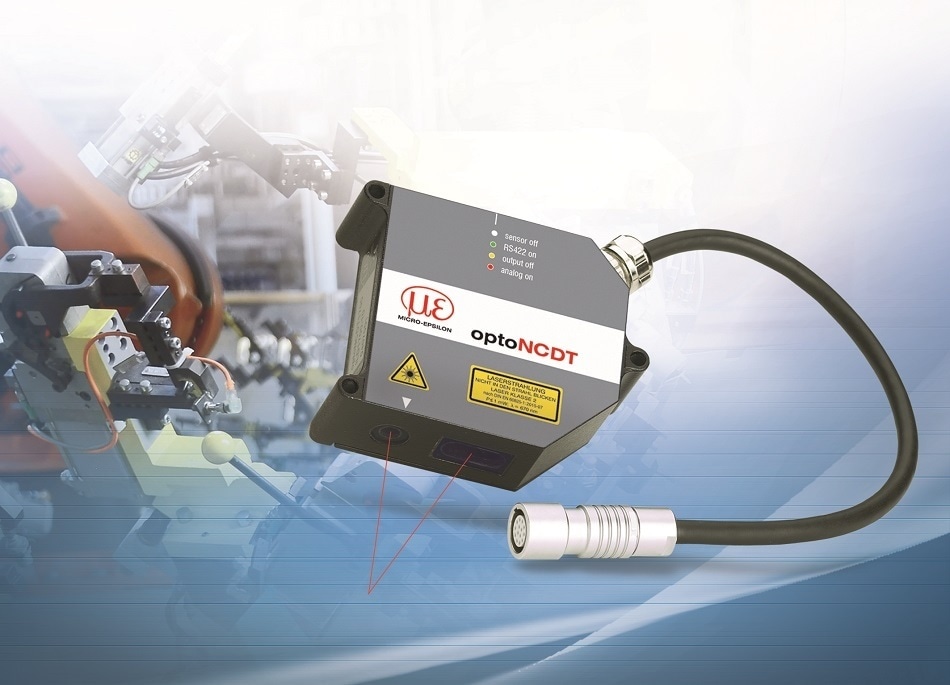The compact optoNCDT 1750 laser sensor is designed for displacement and distance measurements, while offering triple the speed, improved repeatability by a factor of two, and an increase in linearity of 25% compared to its predecessor. The combination of enhanced performance and a wide range of features result in a sensor that takes a leading role in its class.

The optoNCDT 1750 is a powerful laser triangulation sensor which is used in high speed, precise measurements in industrial applications. New evaluation algorithms and enhanced components provide highest accuracy and dynamics. The high-performance optical system generates a small light spot onto the target which enables to even detect smallest components reliably.
Due to its compact design with integral controller, the optoNCDT 1750 is extremely versatile in terms of its potential fields of application, while simplifying installation into restricted spaces. Data output is analog or digital via an RS422 interface. Furthermore, this new laser triangulation sensor provides two switching outputs and one input to control different functions.
Intuitive operation provides the web interface with ease of use and the sensor can be easily configured. Integrated help texts accelerate parameter set up. The laser-optical measuring system operates almost regardless of any material and color due to the real-time surface compensation feature. The new web interface simplifies set up and configuration without requiring any additional operating software. User-friendly presets in the web interface, which are also optimized for difficult surfaces such as semi-transparent plastics and ceramics, PCB materials or carbon- and glass-fiber reinforced plastics, enable rapid commissioning and provide very precise results. Peak selection and suppression of interference peaks enable reliable measurements on oily components in the construction of engines and transmissions as well as on coated materials, measurement objects behind glass or on film-sealed components.
The high measuring rate of the optoNCDT 1750 is required for the analysis of mechanical oscillations. For example, when shunting wagons where the impact of the buffers is to be determined or for measurement tasks of rotating parts, e.g. when determining shaft run out. Optimized lenses have increased the linearity. Together with increased repeatability, the user obtains results with higher stability and precision. This extends the fields of application and even more solutions with high demands on precision can now be implemented.